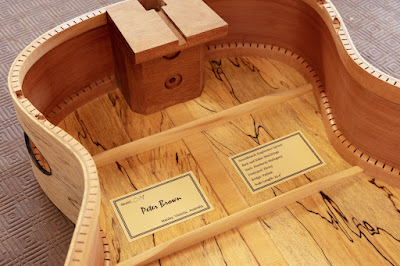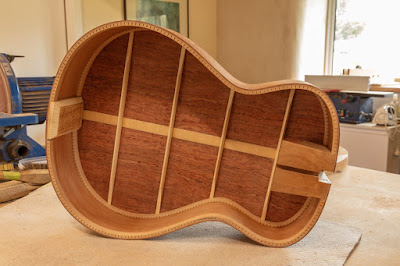It's only natural - and advantageous - that guitar builders develop some skills where playing the guitar is concerned. Frankly, I'd love to be more adept as a player and be able to better assess the acoustic instruments I create in terms of their playability and tone. Unfortunately, after 50 years of sporadic playing I have limited abilities and don't practice nearly often enough to improve in anything other than small increments. Some ongoing hand problems I've learned to live with also contribute to my limitations as a player.
Nevertheless, I still enjoy an hour or two of mindless noodling from time to time, and with that in mind I've set up a desk in a spare corner of the workshop where I can plug in an electric guitar, with visions of recording some original music on the rare occasions that inspiration pays me a visit.
Having concluded that I have no aspirations to gig anywhere even if I thought I was a decent enough player, it seemed wasteful and self-indulgent to have collected an assortment of effect pedals and an amplifier that together represent a significant financial outlay. With my pedals and amplifier currently for sale, my new approach to playing my electric guitar is to make use of a couple of Neural DSP's plug-ins and either a pair of headphones or some studio monitors. Along with my laptop and an audio interface, I can dial in a greater variety of tones than I previously could with my amp and pedals and, as a result, I have hopes that I'll be motivated to devote more time to playing and practice once our cold, wet, winter weather closes in and I'm less inclined to attend to outside jobs around our little property.
- Audio interface: PreSonus Studio 26c
- Studio monitors: KRK Classic 5
- Headphones: PreSonus HD9 Professional Monitoring Headphones
- Plug-ins: Neural DSP's Archetype: Cory Wong and Archetype: Rabea
- Guitar: Ibanez Q54
Cheers
Pete



















